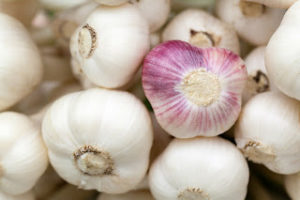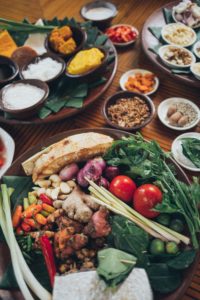
“Let the Yogi eat moderately and abstemiously: otherwise, however clever, he cannot gain success.”
The maintenance of a healthy body and mind has become the prime necessity for all of us especially in the current situation. We all are aware that the yogic exercises and activities are how much needed for physical and mental pursuits. Human body is like a machine. And every machine needs fueling to get energy to promote a smooth mechanism. Various types of yoga exercises and activities help the proper maintenance and functioning of body mechanisms. For its smooth and effective running machine needs fueling. The better input is better food as fuel for our body and the better it will result in terms of physical, mental and spiritual/holistic development and functioning.
What is Yogic Diet?
Diet simply means all kinds of food that a person or community eats and a balanced diet is the one that is balanced in terms of composition as it contains all the ingredients like proteins, vitamins, fats, carbohydrates,minerals and water in their right proportion. Diet of a yogi means a balanced diet or a diet beneficial to get engaged for his yoga sadhana/practice. Food plays a quite significant role in yoga sadhana. A sadhak/practitioner therefore should be very careful while choosing the diet. For seeking proper intellectual, social, and emotional development and functioning leading to spiritual/holistic development, intake of a balanced diet is vital.
Types of Food or Diet –
In ‘Yoga Sutra’ of Rishi Patanjali three main classifications of food are suggested. It is based on the concept of three gunas – Sattvic, Rajasic and Tamasic which are defined as the basic qualities and characteristics found in things of the universe.
- Sattvic Food or Diet – those foods in our diet schedule which nourishes our body, makes it healthy and strong and keeps its vigor,vitality and longevity leading to a state of peace and calmness. It includes foods like fresh fruits, vegetables, milk and milk products, sprouted seeds ,honey and herbs.
- Rajasic Food or Diet – foodstuffs that suit the nature of people having rajasic nature or who lead a very luxurious life and also having a careless attitude to everything. These types of foods disturbs our mind-body equilibrium, resulting in over anxiety making our mind restless and uncontrollable. It includes hot and cold substances, over fried/cooked items, spiced and oiled foodstuff, cold drinks, sweets, tea and coffee.
- Tamasic Food or Diet – This is the most inferior or degraded in quality compared to sattvic and rajasic diets and neither benefits the mind nor the body and is devoid of nutrition and energy. It also affects one’s habits, temperament and emotions like anger, greed, jealousy and envy will increase. It includes items like alcohol, meat, tobacco and other intoxicated substances, infectious food and drinks and junk food.

Yogic diet means a diet that is superior in nature, quality and effects. The choice should be on the basis of the subtle effect the food has on his mind and body. Of the above mentioned diets a sadhak is advised to follow a sattvic diet. Therefore by all means a great choice for planning for yoga is the sattvic diet . “ when sattva predominates the light of wisdom shines through every gate of the body”( Bhagavad Gita).
Till now we have discussed how choosing a perfect diet is beneficial for a sadhaka. In addition to this a yogi should take note of certain other aspects for deriving the desired benefits. They are –
- There should be a definite schedule for intake of food ie. one should intake at least two hours before performing yoga.
- One should consume food maximum two times ie. morning and afternoon. Food consumed at the time of evening should be light and should be taken at least three hours before sleeping time.
- Milk, fresh fruits, green leafy vegetables etc are considered ideal food for sadhakas. They should avoid drinking water while eating.
- Occasional fasting helps their body in its purification task providing rest to the digestive system and activating the vital healing power lying within the body.
- Finally it means that a sadhak should eat and drink only that much which is beneficial for his body systems and serves his interests regarding yoga sadhana.
In the end we may conclude that by regular intake of a proper yoga diet a sadhak puts himself on the sadhana marg with right vigor and vitality. He may reach a stage where his mind turns to be subtle and peaceful. There is a saying in Bhagavad Gita which means ;
“ The purity of food follows the purification of inner nature, by the purification of nature, memory becomes firm and on strengthening the memory, follows the loosening of all ties and the wise get Moksha thereby”.
Happy International Yoga day to All !
See You Soon
Thank You!




Good article 👌 and of course good for health 😊, but difficult to follow for a common man like me 😌
It is ofcourse a good article for those who practice yoga.👍
Thank You Kochacha.
Happy international yoga day.good health leads to a good life…
Thank You Sumi
Very nice blog
Thank You 🥰Mam